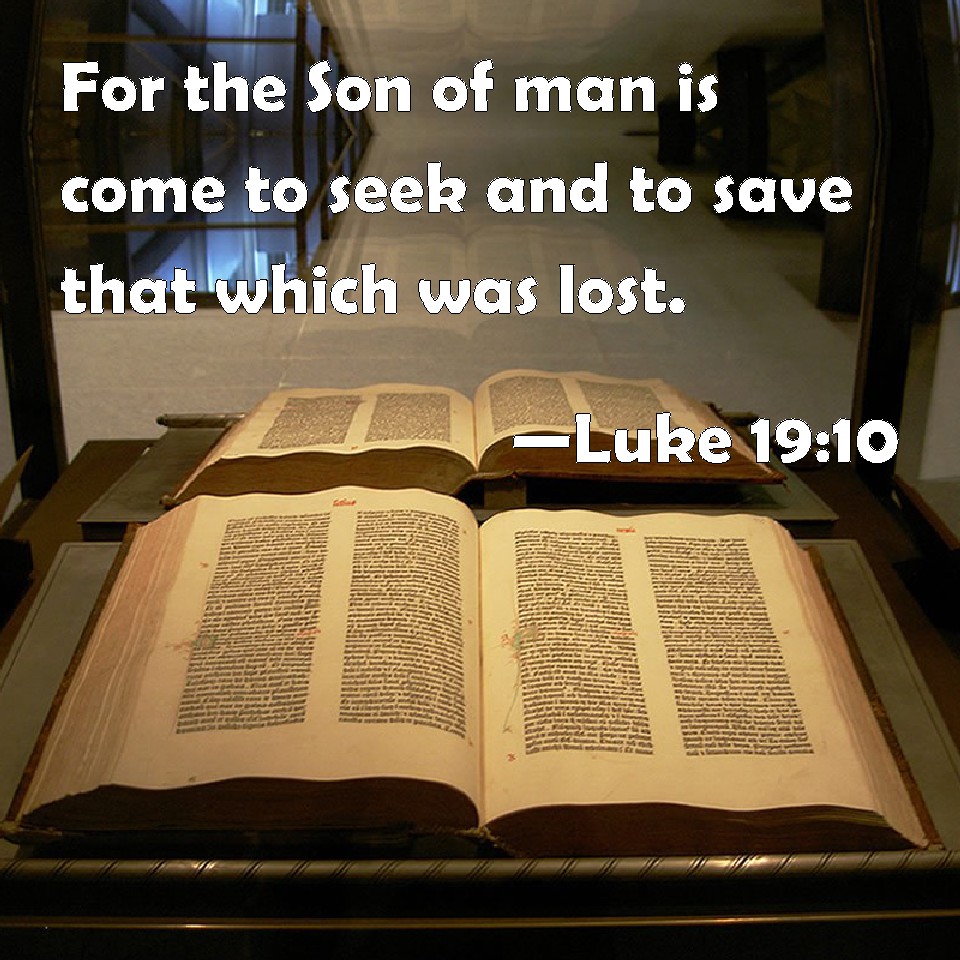The story of the drowning man in Luke 19 is a powerful narrative that has resonated with people for centuries. It is a tale that showcases the transformative power of faith and the importance of trust in God. In this article, we will delve into the story, exploring its deeper meaning and relevance to our lives today.
This biblical passage speaks not only to the spiritual journey of an individual but also to the universal themes of salvation, hope, and redemption. As we examine the story, we'll uncover the lessons it holds for modern believers and non-believers alike.
Through this exploration, we aim to provide a comprehensive understanding of the significance of Luke 19 and its profound impact on the Christian faith. Whether you're a scholar, a seeker, or simply curious about the Bible, this article will offer valuable insights into one of its most compelling stories.
Read also:Top Fitness Clubs In Hiram Ga Your Ultimate Guide To Staying Fit
Table of Contents
- Background of Luke 19
- The Story of the Drowning Man
- Biblical Context and Analysis
- Symbolism and Meaning
- Lessons from the Story
- Historical Impact on Christianity
- Modern Relevance and Application
- Scholarly Views and Interpretations
- Criticisms and Controversies
- Conclusion
Background of Luke 19
Luke 19 is one of the most significant chapters in the Gospel of Luke, offering profound insights into the life and teachings of Jesus Christ. This chapter contains several key stories, including the parable of the mina and the encounter with Zacchaeus, but it also alludes to broader themes of salvation and divine intervention.
The "drowning man" metaphor, while not explicitly mentioned in Luke 19, has been interpreted by scholars as a symbol of humanity's struggle with sin and despair. This interpretation highlights the importance of seeking salvation and the role of faith in overcoming life's challenges.
Historical Context
The Gospel of Luke was written around 80-90 AD, during a time when early Christianity was spreading across the Roman Empire. Luke, a physician and companion of Paul, aimed to provide a detailed and accurate account of Jesus' life and teachings. His work emphasizes themes of mercy, justice, and redemption, making it particularly relevant to the marginalized and oppressed.
The Story of the Drowning Man
While the phrase "drowning man" does not appear verbatim in Luke 19, the metaphor has been used by theologians and scholars to describe the human condition of being overwhelmed by sin and despair. In this context, the story of Zacchaeus in Luke 19 serves as a powerful illustration of divine intervention and salvation.
Zacchaeus, a tax collector and a man often ostracized by society, encounters Jesus and experiences a profound transformation. His story reflects the idea that no one is beyond redemption, no matter how deep they may feel they are "drowning" in their sins.
Key Events in the Story
- Zacchaeus climbs a sycamore tree to see Jesus.
- Jesus invites himself to Zacchaeus' home, surprising the crowd.
- Zacchaeus pledges to give half of his wealth to the poor and repay those he defrauded.
- Jesus declares that salvation has come to Zacchaeus' house.
Biblical Context and Analysis
Luke 19 is part of a larger narrative in the Gospel of Luke that emphasizes themes of repentance, forgiveness, and salvation. The story of Zacchaeus aligns with Jesus' mission to seek and save the lost, as mentioned in Luke 19:10.
Read also:Top Horse Racing Tracks In California Your Ultimate Guide
In the biblical context, the "drowning man" metaphor can be seen as a representation of the human condition. Just as a drowning person desperately seeks rescue, so too do individuals in sin seek salvation through faith in Jesus Christ.
Connections to Other Biblical Passages
This theme is echoed in other parts of the Bible, such as Psalm 69:1-2, where the psalmist cries out, "Save me, O God, for the waters have come up to my neck. I sink in the miry depths, where there is no foothold." These verses highlight the universal human experience of feeling overwhelmed and the need for divine intervention.
Symbolism and Meaning
The "drowning man" metaphor carries rich symbolism that resonates with readers across cultures and generations. It represents the struggle against forces beyond one's control, such as sin, despair, or societal pressures. In the context of Luke 19, this metaphor underscores the importance of faith and trust in God's saving power.
Furthermore, the story of Zacchaeus symbolizes the transformative power of encountering Jesus. His willingness to change his life and make amends for his past actions demonstrates the impact of genuine repentance and faith.
Symbolic Elements in the Story
- The sycamore tree: A symbol of Zacchaeus' effort to see Jesus despite his physical limitations.
- The invitation to Zacchaeus' home: A symbol of Jesus' willingness to reach out to those society considers unworthy.
- Repentance and restitution: Symbols of Zacchaeus' transformation and commitment to a new way of life.
Lessons from the Story
The story of the "drowning man" in Luke 19 offers several valuable lessons for believers and non-believers alike. First and foremost, it teaches the importance of faith and trust in God's ability to save. It also emphasizes the transformative power of repentance and the need for justice and compassion in our interactions with others.
Additionally, the story highlights the inclusivity of Jesus' ministry, showing that salvation is available to all, regardless of their past or social status.
Practical Applications
- Develop a deeper faith by trusting in God's saving power.
- Practice repentance and restitution in your own life.
- Show compassion and inclusivity to those society may deem unworthy.
Historical Impact on Christianity
The story of Zacchaeus and the broader themes of Luke 19 have had a lasting impact on Christianity. They have inspired countless sermons, hymns, and works of art, reinforcing the message of salvation and redemption. Moreover, these themes have influenced Christian ethics and social justice movements throughout history.
For example, the story of Zacchaeus has been used to advocate for economic justice and the fair treatment of marginalized groups. It serves as a reminder that true faith is demonstrated through actions that promote justice and compassion.
Examples of Historical Influence
Throughout history, Christian leaders and reformers have drawn inspiration from Luke 19. For instance, the abolitionist movement in the 19th century used biblical narratives like this to argue against slavery and advocate for human rights.
Modern Relevance and Application
In today's world, the story of the "drowning man" in Luke 19 remains highly relevant. It speaks to the universal human experience of feeling overwhelmed and the need for salvation and redemption. Whether through faith, therapy, or community support, individuals can find hope and healing in their struggles.
Moreover, the story encourages us to reach out to others who may be "drowning" in their own struggles, offering support and compassion. This aligns with modern values of empathy and social responsibility.
Applying the Story in Daily Life
- Offer support to those in need, whether through prayer, volunteer work, or acts of kindness.
- Practice self-reflection and repentance to grow spiritually.
- Advocate for justice and compassion in your community and beyond.
Scholarly Views and Interpretations
Scholars and theologians have offered various interpretations of Luke 19 and the "drowning man" metaphor. Some emphasize the story's focus on salvation and redemption, while others highlight its social justice implications. Regardless of the interpretation, most agree on the story's enduring relevance and impact.
For example, renowned biblical scholar N.T. Wright has noted that the story of Zacchaeus illustrates the intersection of personal transformation and social justice, making it a powerful model for modern Christians.
Key Scholarly Perspectives
- N.T. Wright: Emphasizes the social justice implications of the story.
- Joel B. Green: Highlights the transformative power of faith and repentance.
- John Dominic Crossan: Focuses on the story's subversive nature and challenge to societal norms.
Criticisms and Controversies
As with any biblical passage, Luke 19 has faced criticisms and controversies over the years. Some skeptics question the historical accuracy of the Gospel accounts, while others debate the theological implications of the story. Despite these challenges, the narrative remains a cornerstone of Christian faith and practice.
It's important to approach such criticisms with an open mind, engaging in thoughtful dialogue and seeking to understand different perspectives. This fosters a deeper appreciation for the complexity and richness of the biblical text.
Addressing Common Criticisms
- Historical accuracy: Scholars continue to debate the exact historical details, but the story's core message remains powerful regardless of its origins.
- Theological implications: Different interpretations exist, but most agree on the story's emphasis on salvation and redemption.
Conclusion
In conclusion, the story of the "drowning man" in Luke 19 offers profound insights into the human condition and the transformative power of faith. Through the narrative of Zacchaeus, we see the importance of repentance, compassion, and trust in God's saving power. These lessons remain relevant today, inspiring individuals to seek salvation and promote justice in their communities.
We invite you to reflect on these teachings and consider how they might apply to your own life. Share your thoughts in the comments below, and explore other articles on our site for further inspiration and guidance. Together, let's continue the journey of faith and discovery inspired by the timeless wisdom of the Bible.



